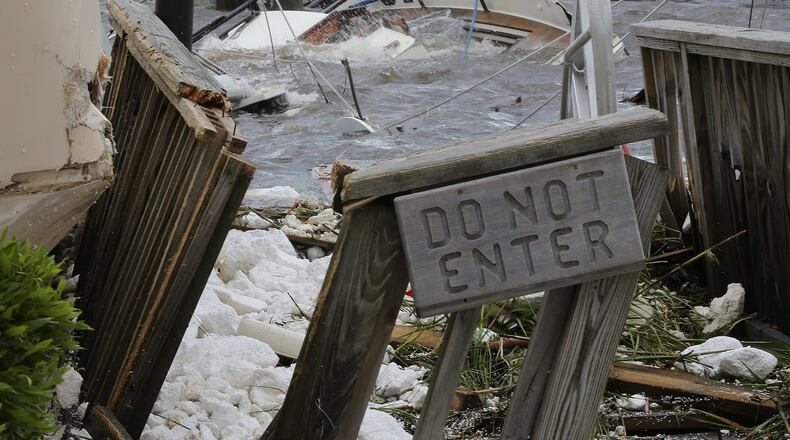Gov. Nathan Deal urged the state’s residents – and the tens of thousands of evacuees from Florida sheltering in Georgia – to stay put on Tuesday as workers remove debris and clear roads damaged by the remnants of Hurricane Irma.
The governor warned that recovery is “going to be a little more slow” because the massive storm touched every corner of the state, knocking out power to more than 1.2 million people and leaving at least three people in Georgia dead.
And he said the thousands of residents in coastal Georgia ordered to evacuate last week won’t be able to return until bridges are inspected and local governments approve. Two bridges – one in Savannah and one in Brunswick – have been deemed impassible by state officials.
The storm downed trees and caused flooding that cut off scores of metro Atlanta roads and left parts of the Georgia coast in shambles. Both St. Simons Island and Tybee Island were inaccessible late Monday and Glynn County was closed until “further notice.”
The massive storm, which at one point was one of the strongest ever recorded in the Atlantic, lost steam as it pounded Georgia on Monday. By early Tuesday, it had been downgraded to a tropical depression dumping sheets of rain in west Georgia and Alabama.
All Georgia’s interstate highways are open, but fuel outages are reported throughout the state, including in hard-hit coastal regions.
“We want to remind everyone that access to fuel will not be guaranteed if they travel south,” said Homer Bryson, the head of Georgia’s emergency management agency.
Crews have been clearing roads around the state since the storm struck, said state transportation chief Russell McMurry. About 180 roads remained closed and 260 traffic signals are out, a vast improvement from the peak of Irma’s fury. At one point, more than 1,000 roads were blocked by debris.
Deal and other state officials cautioned the flood of Florida evacuees anxious to return home to hunker down and wait for their local governments to give the all-clear signal before packing the highways leading south.
“We understand that you are anxious that you are anxious to get home. That’s a natural response,” said Deal. “But it’s important that you know what your local jurisdictions in Florida are going to allow you to do when you actually travel home.”
Col. Mark McDonough of the Department of Public Safety had a message to those who do risk driving south: don’t get out of your vehicles in the road. Don’t drive over downed power lines. Don’t drive into standing or moving water. And give road crews “the space they need” to make their repairs.
Paul Bowers, chief executive of Georgia Power, also pleaded for patience as utility staffers work to restore electricity. He said more than 400,000 of the utility’s customers in metro Atlanta are still without power. Hundreds of thousands of other homes throughout the state were also knocked out by the storm.
“Our focus is to get our customers back on line, get to normal as fast as we can,” said Bowers.
Deal said he’s asked the federal government for “post-storm” assistance in Irma’s wake. At least 600 Georgia National Guard troopers are headed to Florida to help with storm recovery there. And officials said federal and state emergency staffers are headed to the coast to survey flooding that swamped St. Marys and other communities.
“We’re sending a lot of assets in the area to assist,” said Bryson, “because the recovery there will be much longer than the rest of the state.”
About the Author
Keep Reading
The Latest
Featured



